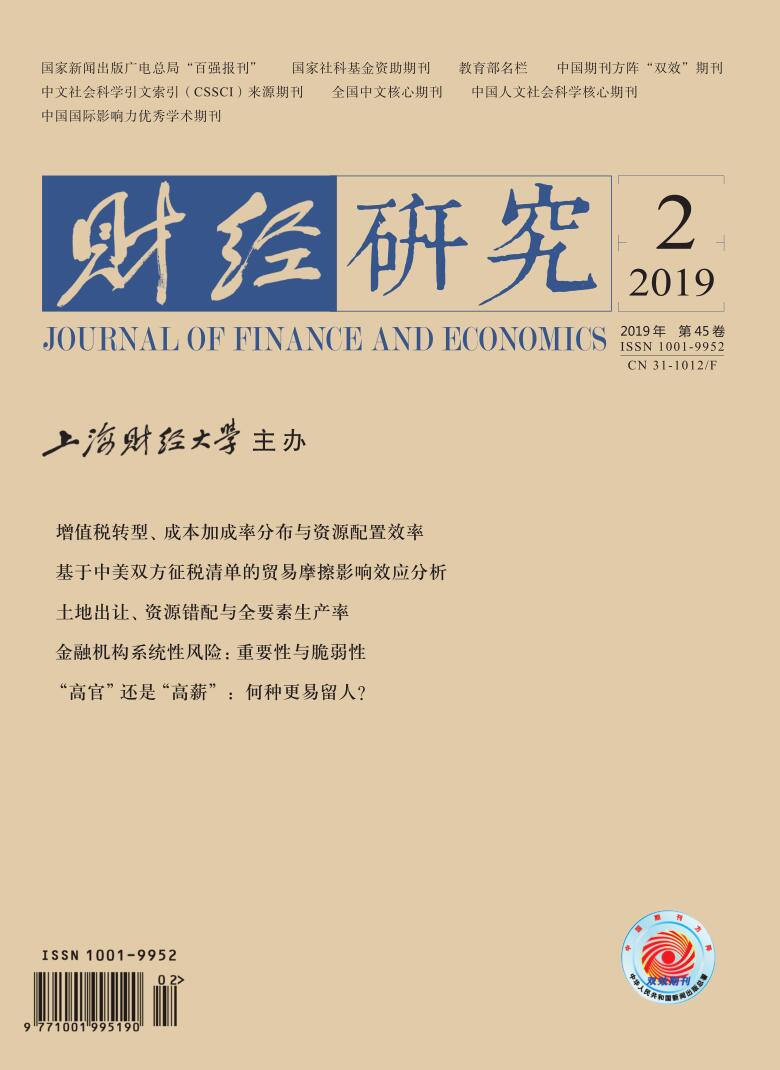Since the reform and opening up, the Chinese economy has achieved rapid growth, accompanied by the gradual slowdown in the growth rate of total factor productivity. Compared with developed countries, China’s total factor productivity is still at a low level and there is a serious imbalance between regions. The rapid rise in house prices and land prices has made local governments’ development mode centered on land transfer, and it has been classified as the " culprit” of high housing prices. What is worth exploring is: What impact does local governments’ development mode with land transfer as its core have on China’s total factor productivity? Can we explain the trend of change and regional differences in China’s total factor productivity from the perspective of land lease? This paper focuses on the impact of local governments’ land lease behavior on urban total factor productivity. Based on the existing research literature, this paper proposes two hypotheses of this study through the analysis of the status quo and the theoretical mechanism. On the empirical test, the
 / Journals / Journal of Finance and Economics
/ Journals / Journal of Finance and EconomicsJournal of Finance and Economics
LiuYuanchun, Editor-in-Chief
ZhengChunrong, Vice Executive Editor-in-Chief
YaoLan BaoXiaohua HuangJun, Vice Editor-in-Chief
Land Lease,Resource Misallocation and Total Factor Productivity
Journal of Finance and Economics Vol. 45, Issue 02, pp. 73 - 85 (2019) DOI:10.16538/j.cnki.jfe.2019.02.006
Summary
References
Summary
[1] Chen B K, Jin X, Ouyang D F. Housing price, resource misallocation and productivity of industrial enterprises in China[J].The Journal of World Economy, 2015, (4):77-98.(In Chinese)
[2] Fan J Y, Mo J W. Local governmnet debt, land market institution and regional industrial gowth[J].Economic Research Journal, 2014, (01): 41-55.(In Chinese)
[3] Fan Z Y. The source of land finance: fiscal pressure or investment incentives[J].China Industrial Economics, 2015, (06):18-31.(In Chinese)
[4] Jiang Z. Industrialization, local government efforts and land fnance: A perspective of land finance in China[J].China Industrial Economics, 2014, (10):33-45.(In Chinese)
[5] Li X, Hong G Z, Huang L X.The mystery of land finance growth in China: Tax-sharing reform, strategic interaction of land finance[J].China Economic Quarterly, 2013, (4):1141-1160.(In Chinese)
[6] Li L X, Huang P Y, Ma G R. Land resource misallocation and productivity difference of industrial enterprises in China[J].Management World, 2016, (8):86-96.(In Chinese)
[7] Liang R B, Han W B. Regional competition, land lease and urban economic growth:Empirical analysis based on spatial panel model[J].Public Finance Research, 2011, (8):48-51.(In Chinese)
[8] Liu S J, Liu P L,He J W.China's future productivity improvement potential and economic growth prospects[J].Management World, 2015, (3):1-5.(In Chinese)
[9] Shao C D, Su D N, Deng H T. Housing prices, land finance and city agglomeration characteristics:The road of China's city development[J].Management World, 2016, (2):19-31.(In Chinese)
[10] Wang X B, Zhang L, Xu X X. Local government land lease, infrastructure investment and local economical growth[J].China Industrial Economics, 2014, (7):31-43.(In Chinese)
[11] Yang J D, Yang Q J, Liu K. Land finance and debt growth:An empirical study based on prefecture-Level panel data[J].Finance & Trade Economics, 2018, (2):52-68.(In Chinese)
[12] Yang Q J, Zhuo P, Yang J D. Industrial land lease and competition quality bottom line competition——Based on the empirical study of panel data of prefecture-level cities in China from 2007 to 2011[J].Management World, 2014, (11):24-34.(In Chinese)
[13] Yu Y Z, Zhang S H. Urban housing Prices, purchase restriction policy and technological innovation[J].China Industrial Economics, 2017, (06):98-116.(In Chinese)
[14] Zhang L, Wang X B, Xu X X. Fiscal incentive, political incentive and local officials' land supply[J].China Industrial Economics, 2011, (04):35-43.(In Chinese)
[15] Zheng S Q, Sun W Z, Wu J, Wu Y. Infrastructure investment, land leasing and real estate price:a unique financing and investment channel for urban development in chinese cities[J].Economic Research Journal, 2014, (08):14-27.(In Chinese)
[16] Zhou B, Du L S. Land finance and real estate price rise: Theoretical analysis and empirical research[J].Finance & Trade Economics, 2010, (8):109-116.(In Chinese)
[17] Cao G Z, Feng C C, Tao R. Local " land finance” in China’s urban expansion: Challenges and solutions[J]. China & World Economy, 2008, 16(2): 19–30.
[18] Chen T, Kung J K S. Do land revenue windfalls create a political resource curse? Evidence from China[J]. Journal of Development Economics, 2016, 123: 86–106.
[19] Du J F, Peiser R B. Land supply, pricing and local governments’ land hoarding in China[J]. Regional Science and Urban Economics, 2014, 48: 180–189.
[20] Hsieh C T, Klenow P J. Misallocation and manufacturing TFP in China and India[J]. The Quarterly Journal of Economics, 2009, 124(4): 1403–1448.
[21] Tiebout C M. A pure theory of local expenditures[J]. Journal of Political Economy, 1956, 64(5): 416–424.
Cite this article
Zhang Shaohui, Yu Yongze. Land Lease,Resource Misallocation and Total Factor Productivity[J]. Journal of Finance and Economics, 2019, 45(2): 73-85.
Export Citations as:
For
ISSUE COVER
RELATED ARTICLES




 8446
8446  12971
12971

